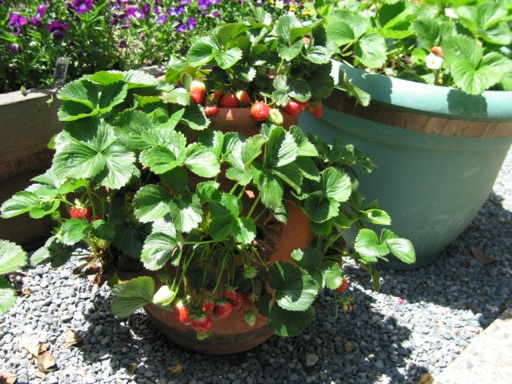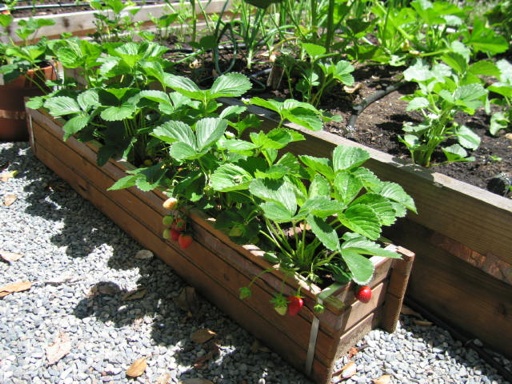Strawberry Season Is Here


The long days and warm weather have arrived, and our plants are loving it. Our long day Sequoia strawberries started ripening about two weeks ago. Today, I picked a whole bowl full of strawberries, which we enjoyed for lunch.
Strawberries are probably one of my favorite garden plants. Our Sequoia strawberries have grown really well in our garden and have produced many strawberries. Our home grown strawberries are so delicious. They are softer and sweeter than the strawberries I typically buy in grocery stores.
In order to get more plants, I let the runners from last year’s strawberries root in our raised beds, and then I transplanted them into pots back in December. The second photograph above shows the same strawberries pictured in my December 29th post. I now have about 15 strawberry pots, because I had so many runners last year. The newly planted strawberries from last year’s runners are growing very fast and are getting lots of berries. But even the strawberry plants that are 2-3 years old are growing and producing many high quality berries. The first photograph above shows strawberries that are about 2 years old.
Some of the newly planted strawberries from last year’s runners are already starting to generate runners of their own. This year, I plan to trim some of the runners so that I don’t get as many. I have read that cutting off the runners encourages the plants to produce more strawberries, although I haven’t tried this technique yet. I have noticed that the older strawberries do not seem to generate as many runners.
Recently, I decided to try experimenting with some new day neutral strawberries. I planted several Quinault strawberries about 3 years ago, and I was really unhappy with them. They produced very few strawberries. The strawberries they did produce were small and tough, even though they were growing under the same conditions as the Sequoias, which have always been wonderful. A few weeks ago, I planted Seascape and Aromas. Both are day neutral strawberries that are supposed to produce strawberries over a longer season. I admit I will be surprised if they taste as good as Sequoia.
I have read that strawberries will not produce berries when the daytime high temperatures exceed 85 degrees F on a regular basis. We are lucky here, because the summertime highs average around 77-80 degrees, and daytime highs above 85 degrees are rare except for the occasional heat wave. Last year, we harvested strawberries from May through August, except for about a month in June. I attribute that gap to not fertilizing them regularly. As soon as I started to fertilize them, they began to produce berries again.
May 09 2009 02:46 pm | Strawberries